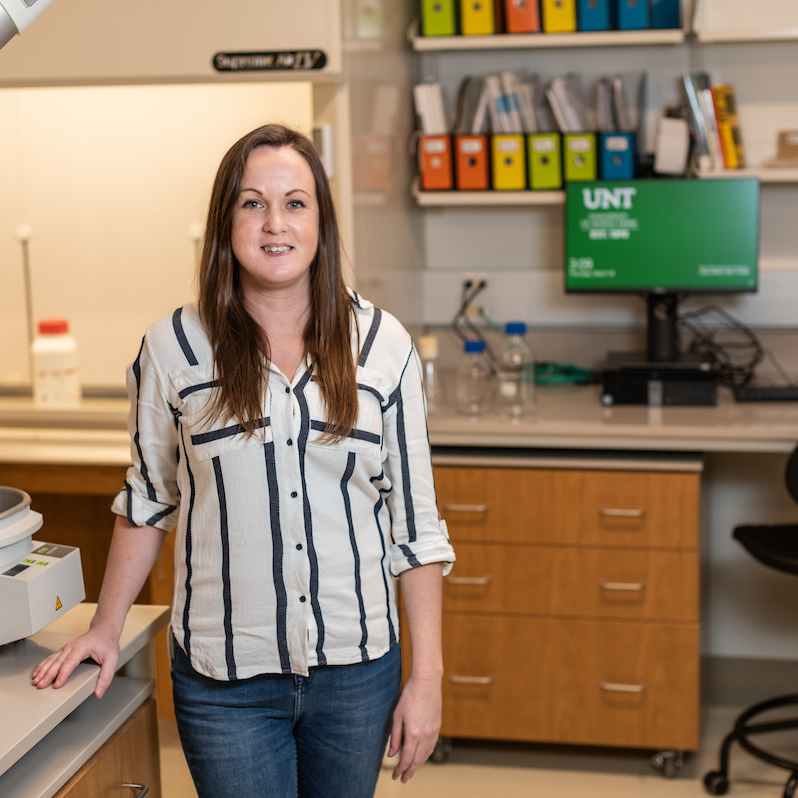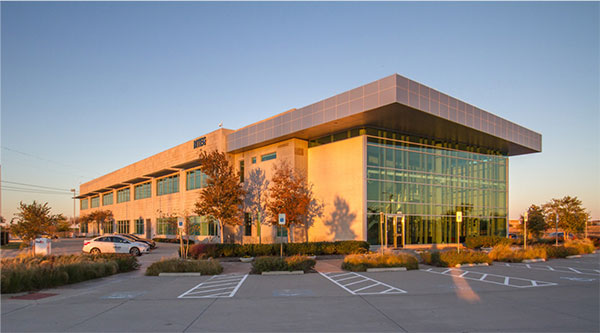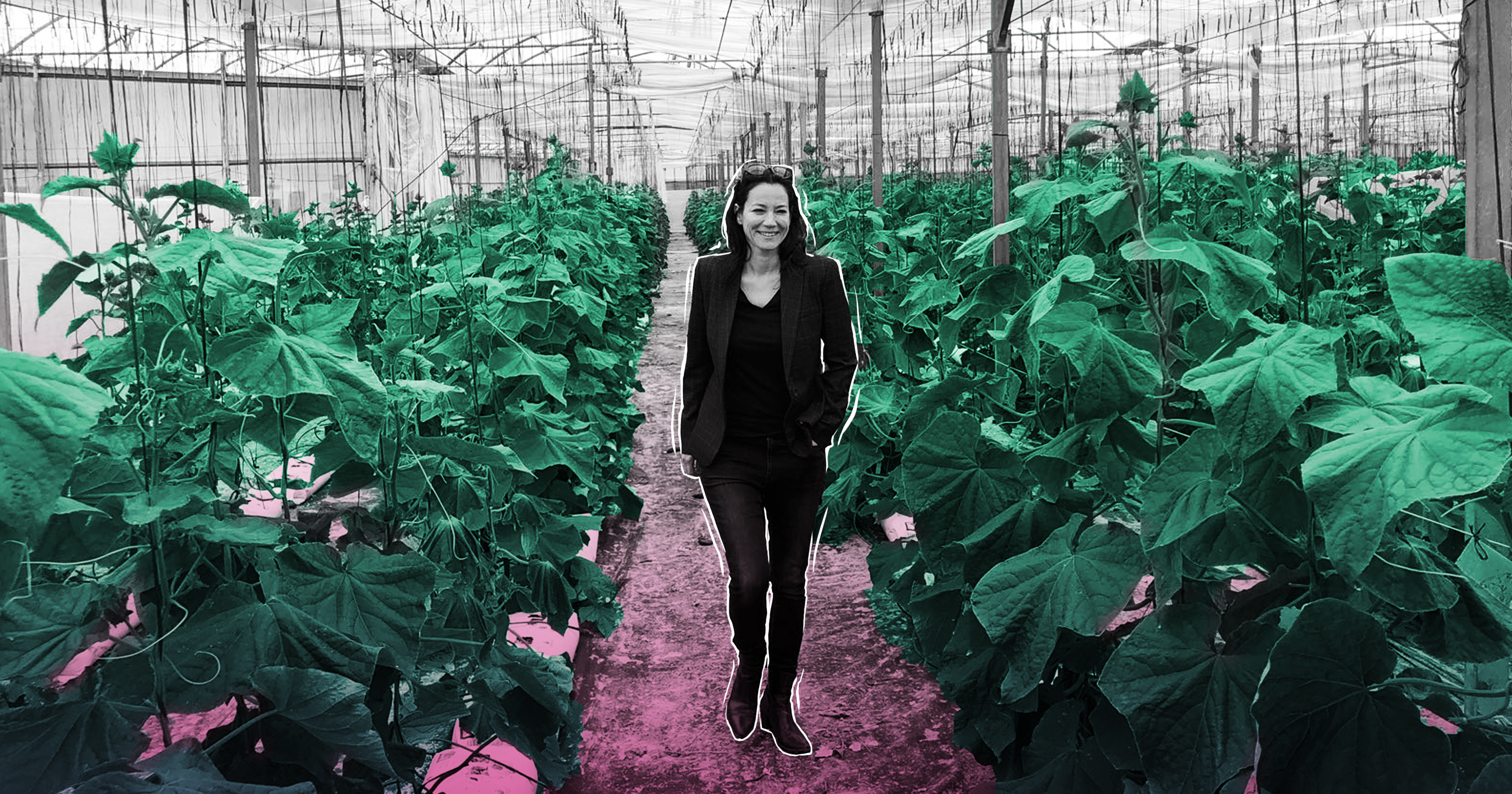Out of over 600 proposals from nearly 40 countries, Dr. Elizabeth Skellam’s proposal on fungi as a biocontrol agent was one of 24 projects funded by Bayer’s Grants4Ag initiative. As a researcher based at the University of North Texas (UNT), this achievement makes her one of only 7 scientists from American universities to receive a grant. This partnership came together thanks to the efforts of university administrators Jessica Watts and Steven Tudor. We spoke with Watts and Tudor to learn more about the team effort that goes into academic-industry collaborations like Grants4Ag.
What are your respective roles at UNT?
Jessica Watts: I’m the Executive Director, Corporate and Foundation Relations at UNT. My team is in the advancement office, so we work with private funders, specifically companies and foundations. We submit two to three proposals a week to these companies and foundations to gain support for research programs, scholarships, and student support. With companies wanting to recruit top talent, the latter two are a big focus.
Steven Tudor: I’m the Director of Licensing under the Division of Research and Innovation, which houses traditional grants as well as industry-sponsored research that is not on the advancement side. Part of my role deals with commercializing intellectual property. But, getting products out into the market requires an industry partner. I’m always looking for opportunities to get our faculty paired with industry, and the best place is usually an R&D contract. So, I joined Halo to connect our faculty with industry partners, allowing them to network in hopes of leading to projects down the line.
How were you involved with the Grants4Ag project alongside Dr. Elizabeth Skellam?
JW: We both saw the opportunity. I was able to attend the webinar, which was helpful to learn about the process through Halo and the company’s grant program. I liked how much information was shared: here’s what we’re looking for, no smoke and mirrors. I sent that information to several of our faculty leads, and in talking to Steven, I found out he did the same.
The opportunity ended up getting to Dr. Skellam, and she reached out right away. I made sure that she then knew about Halo’s webinars. Elizabeth attended, she got more info, her research was already aligned, and she was able to get her proposal in order.
With our divisions, we work together to support the faculty. During the webinar, we asked, “Is this going to be a gift? Is this going to be a grant?” To us and to most universities, this counts as a research gift, but it is managed through our research office. Once that money awarded as a gift is expended, it counts as a research expenditure. This opportunity was managed through our office, but both divisions worked together to execute and make sure that Dr. Skellam gets that expenditure counted towards her.

How are open innovation challenges such as Grants4Ag and platforms such as Halo an asset to your job functions?
JW: It’s incredibly helpful to be able to say, “Hey, here’s an opportunity, check it out,” or, “Our resources are aligned and you should apply.” That is very helpful to those of us that are doing as much as we can to get proposals and contracts out the door.
Halo previously had a partnering opportunity with PepsiCo, and they shared the layers of chemicals and the layers of polymers that they wanted to see. Perhaps our faculty’s research may not be a great fit for this grant, but that allows our faculty to start conversations and discuss ideas. The level of insight we get from these RFPs is great not only for creating proposals but also for exploring new ideas and research areas. We can’t really underestimate the importance of that detail. Getting to know companies and identifying research interests and faculty takes time, especially if it is a new relationship, so having access to a platform like Halo is a huge benefit.
ST: It also gives us the ability to put ourselves out there, making our researchers and the university known to companies like Bayer. I spent eight years in plant biotech research, and we have a large group of plant biology researchers. Networking with Bayer and making them aware of research at UNT can only help us down the line.
And when our faculty receive awards like this, we work out the contract and can ensure that the deliverables have a customer at the end. These RFPs are written to be targeted, making the process of commercialization that much more straightforward.
How does UNT work to be competitive against universities located closer to research hubs?
ST: Our office markets itself quite a bit. Anytime we have technology or IP in the later stage, we’re sending out queries and proposals to companies all over the world. We do that on a personal level but also through third parties to reach more people. You almost have to take the shotgun approach, but we are confident that the companies we work with will have a great experience. Our driving goal is to create a great customer experience for both our faculty and our industry partners. We want to make the contracting as seamless as possible and ensure both sides benefit.
JW: For the most part, folks like Steven and I cultivate these relationships. We get some huge wins, but we’re behind the scenes—we celebrate, and then onto the next. There’s always more to do. You don’t have a lot of showy people in corporate relations-type roles. For example, Stephen’s team and my team worked on a million-dollar research gift from a company. We were taking pictures that day of the company, our faculty, and our students. Even though we worked to make this collaboration happen, I didn’t even think I should be in this picture. I think that tells you about the type of people in these roles.
We love building these relationships. There’s always more to do once you get that research gift. We worry about all those pieces of that relationship, following through and making sure that faculty are spending the money and reporting back on the research that they’re doing. It’s an ongoing cycle: it doesn’t just stop when we receive a gift.
What are some of UNT’s advantages you present to potential corporate partners?
JW: We pride ourselves on our accessibility, for students as well as faculty. We have nearly 41,000 students, but as for faculty, we aren’t so big as to get lost in the mix. I believe our partners receive more attention and care as a company partnering with UNT compared to other bigger institutions where it takes $5 million to get in the door. Let’s say $1 million dollars, we’re going to celebrate that and write a lot of stories about it–it’s a big deal to us. That is a benefit of working with some of these really strong universities who are trying to build a national footprint. You receive great attention and care as a corporate partner.
We also celebrate the diversity of the ideas coming from our campus. We have an incredibly diverse campus as a Hispanic-serving institute and as a minority-serving institute. That is ingrained in how we approach research, ensuring that we have diverse minds around the table and that our faculty take care to create a diverse team to work with corporate partners as well.
ST: I’ve been at a couple institutions where the research expenditure has been five times what we have here. But at UNT, we value each faculty for what they value. We don’t care if the deal is millions of dollars or $20,000: if it’s important to them, it’s important to us. We want to make sure that they can get everything they want out of their research agenda through working with industry. We take our time to make sure and explain everything to them to get it done as smoothly as we can.
What are some of UNT’s areas of strength in research, and what are some of your most important current industry partnerships?
JW: We have a rockstar faculty member in chemistry: Dr. Guido Verbeck. He runs his own lab and has served as the Associate Dean of Research. He has worked with Steven’s team for years and has many corporate contracts and sponsored research projects under his belt. We had an opportunity to talk through a philanthropic engagement with one of the companies he has been working with, as well as building out some lab space in our Inspire Park location, which is our incubator in Frisco.
But, it all goes back to trust. The company knew Dr. Verbeck incredibly well, Stephen’s team had done a great job with previous contracts, and we had spent time building that relationship. That was a big win for us, taking an opportunity to work together and expanding upon a relationship that took time to build this past year.

ST: We’re a pretty comprehensive university in my experience in terms of having great faculty to work that would benefit from working with industry all over campus. It’s more about us being responsive to what the faculty wants. I have probably marketed 90% of the departments at UNT for IP and research in the industry. They all have great research agendas, great minds, and we try to build collaborative research centers. We center those around upcoming and emerging areas in order to land large industry partnerships. Lately, we’ve done quite a bit of Small Business Innovation Research (SBIR) and Small Business Technology Transfer (STTR) work, but we go after large DOD and NIH grants that pull all the faculty together and make proposals that much more fundable. With all these different departments and research areas in one location, they know they can fund one university but be across disciplines.
Final thoughts?
JW: The Corporate and Foundation Relations team and Steven’s team, Research and Innovation, have a fantastic relationship at UNT. That’s not always the case at universities. I would encourage building those internal relationships and building that trust. We’re working toward the same goal of getting as much external funding into the university–whether that be a private gift, a research grant, a corporate contract, or a sponsored project.
ST: To Halo, I would just say, hang a little, send us more! These are great RFPs. When industry expresses what they are looking for, it’s so much easier for us on the university side to connect with the right people and then respond with a proposal that’s on point.








